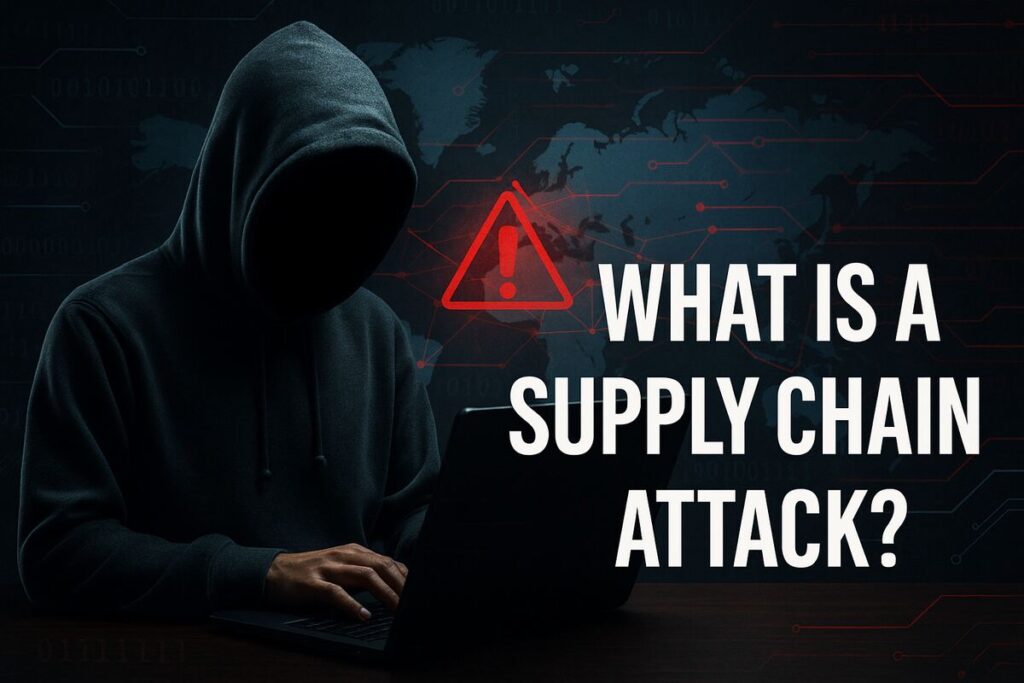Physical Address
304 North Cardinal St.
Dorchester Center, MA 02124
Physical Address
304 North Cardinal St.
Dorchester Center, MA 02124

Imagine waking up to headlines announcing major airlines grounded, hospitals paralyzed, and global manufacturers halted—all because of a single, invisible digital strike. This is not science fiction. It’s the devastating reality of a supply chain attack.
In today’s interconnected world, a single vulnerability buried deep within your software supply chain can have catastrophic consequences. This article will help you understand what supply chain attacks are, how they unfold, and, most importantly, how you can shield yourself and your organization from becoming the next victim.

A supply chain attack occurs when cybercriminals target vulnerabilities within an organization’s trusted partners, vendors, or software providers to compromise systems indirectly. Instead of launching a direct assault, attackers insert malware or backdoors into widely used software or hardware components.
The 2020 SolarWinds attack is a chilling example. Hackers infiltrated SolarWinds’ Orion software, affecting over 18,000 organizations, including U.S. government agencies and Fortune 500 companies, as reported by CISA.
Here’s a simplified breakdown of how these devastating attacks typically play out:
The ripple effect of a successful supply chain attack can be catastrophic:
In short, no sector is immune, as highlighted by The World Economic Forum’s Global Risks Report.
Understanding the most common entry points helps you build better defenses:
While no system is entirely foolproof, these strategies can significantly reduce your risk:
Adopt a “never trust, always verify” approach for every user, device, and connection within your organization.
Conduct rigorous security assessments of suppliers and partners before onboarding.
Use advanced threat detection tools and AI-driven monitoring to spot suspicious activity early.
Prepare for the worst with a tested, comprehensive incident response strategy.
| Aspect | Traditional Attacks | Supply Chain Attacks |
|---|---|---|
| Target | Direct (company) | Indirect (vendors/suppliers) |
| Detection Difficulty | Moderate | High |
| Potential Impact | Localized | Global, far-reaching |
Unfortunately, they’re on the rise. According to IBM’s X-Force Threat Intelligence, supply chain attacks increased by 42% in the past year.
Absolutely. Small vendors often have weaker security, making them attractive entry points for attackers.
Only if they come from verified, trusted sources. Never bypass update authenticity checks.
The threat of a supply chain attack sparking devastating global chaos is no longer theoretical—it’s happening. But by adopting a proactive security mindset, rigorously vetting partners, and securing every link in your supply chain, you can dramatically reduce your organization’s risk.
Stay informed, stay prepared, and share this article to help others fortify their defenses against the hidden dangers lurking in today’s interconnected world.